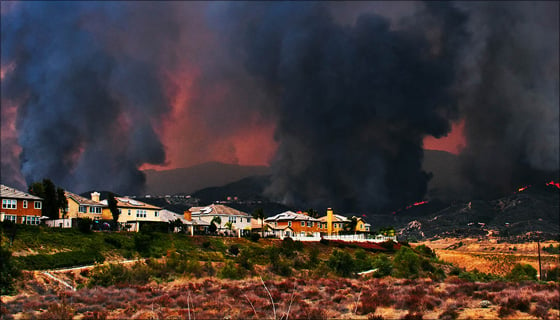
The California Department of Insurance (DOI) has issued a new regulation that requires P&C insurance companies to provide greater transparency into wildfire risk scores and offer discounts to homeowners who take actions to mitigate their risk of wildfire exposure.
What this means, is that insurers need to file the updated specifications of their wildfire risk models to the CA DOI by April 12, 2023. It should be noted that most current wildfire risk models do not meet the requirements of the new regulation, particularly when it comes to the ability to provide transparency and flexibility to account for mitigating actions.
As California is the nation’s largest P&C market with more than $11 billion in homeowners and fire insurance premiums written, the new regulation demands prompt attention and action. The regulation is the first in the nation to require insurance companies to provide consumers transparency into their wildfire risk scores -- and to provide discounts for mitigation. The new regs are based on the Safer from Wildfires framework created by the CA DOI.
New regulations will require that all P&C insurance companies doing business in California submit specifications and new rates that “recognize the benefit of safety measures such as upgraded roofs and windows, defensible space, and community-wide programs such as Firewise USA and the Fire Risk Reduction Community designation developed by the state’s Board of Forestry and Fire Protection.”
Guidewire HazardHub has developed a detailed explanation of the requirements, which include provisions that insurers must recognize:
-
Community mitigation, specifically for Firewise and Fire Risk Reduction Communities (FRRC) as defined by Public Resources Code (Section 4290.1).
-
Property-level mitigation efforts including measures addressing the immediate surroundings such as the clearing of vegetation and debris from under decks within five feet of the insured structure; and removal or absence of combustible structures such as sheds from the area within thirty (30) feet of the building.
-
Property-level mitigation efforts related to building hardening measures including provision for a Class A fire-rated roof; enclosed eaves; fire-resistant vents; multipaned windows or functional shutters; and 6 inches of vertical clearance from the ground up.
Guidewire recently released the HazardHub Enhanced Wildfire Model which was designed to meet the new challenges of this regulation. The enhanced model uses 30-meter vegetation resolution with cutting-edge geospatial tools to deliver highly accurate assessments of wildfire risk for any location in the country. Thanks to its higher fidelity, it can significantly reduce the number of properties categorized as the most dangerous, while simultaneously pinpointing the most fire-prone areas.
The HazardHub model provides greater accuracy than competitive models due to the scope and depth of data it employs:
-
Wildfire Base Score
-
Distance to High-Risk Areas
-
Vegetative Burn Points within a half mile
-
Fire Season Rainfall
-
Historic Wildfire Parameters
-
Katabatic Wind Zones
It also provides transparency: every model input is disclosed and automatically included in the API for easy reference to conduct data validation and dispute resolution.
With the HazardHub Enhanced Wildfire Model, insurers have fewer steps to achieve conformance with the new regulations – and will not have to create new dispute resolution channels or pre-renewal processes.
To learn more about HazardHub and how the Enhanced Wildfire Model allows you to more accurately underwrite wildfire risk, connect with your Guidewire Account Executive or visit our HazardHub web page.